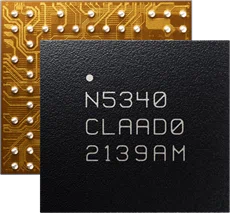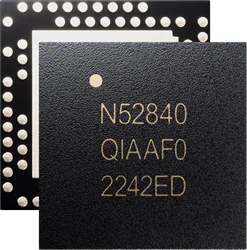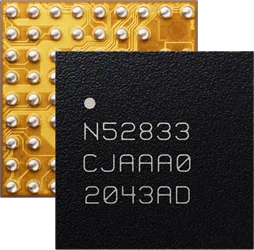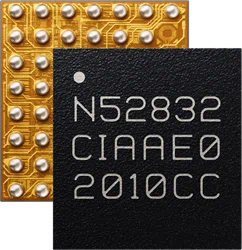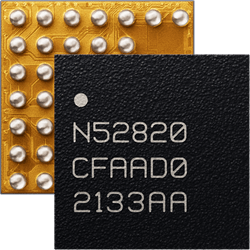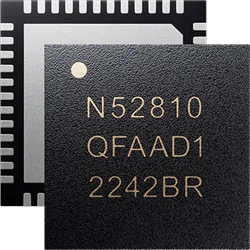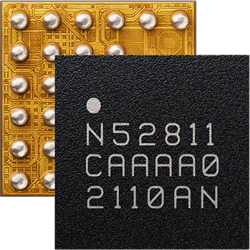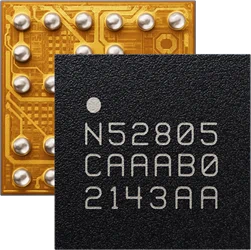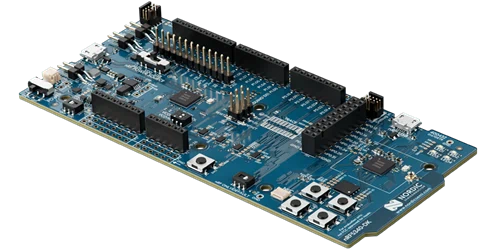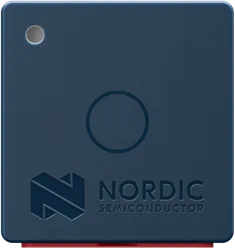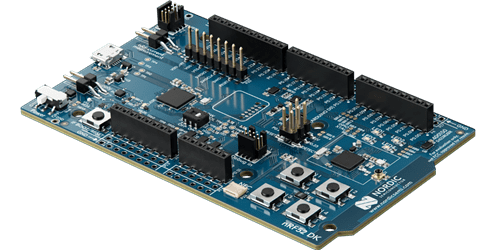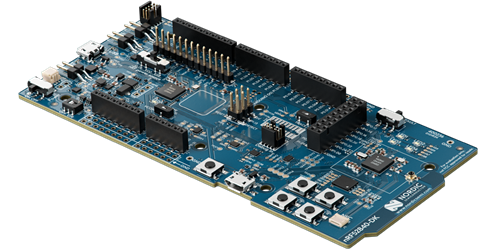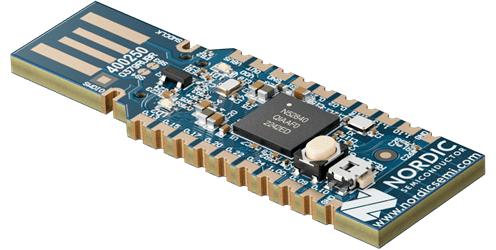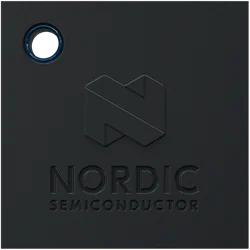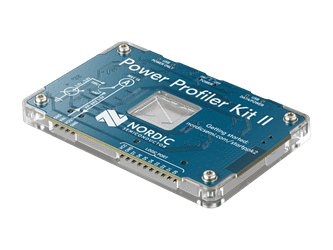The nRF52840 will take Bluetooth further, faster!
Bluetooth 5
Taking Bluetooth further
Introduction
There are four significant new features of Bluetooth 5:
- A higher bit rate of 2 Mbps.
- A long range mode with better sensitivity at two new lower bit rates of 500 kbps and 125 kbps.
- An 8 x improvement in broadcast capability with advertising extensions.
- An improved channel selection algorithm (CSA #2) which enables improved channel coordination and coexistence efficiency with other Bluetooth and non-Bluetooth traffic.
The new features
The bit rate for Bluetooth LE has now been extended from a singular transmission speed (1 Mbps) to four discrete bit rate speeds as seen below. The maximum bit rate is doubled to 2 Mbps. Together with advancements introduced in Bluetooth 4.2 which allowed for Data Length Extensions (DLE) overall throughput is x5 higher than the original Bluetooth 4.0 level. Now application throughput not including overhead such as addressing can be as high as 1.4 Mbps.
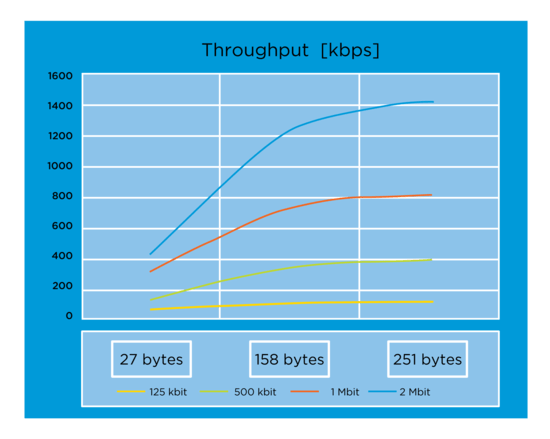 Fig. 1 Throughput with different payloads and bit rates
Fig. 1 Throughput with different payloads and bit rates
This increase offers opportunities for new applications that simply need more data throughput than was possible previously. It also enables much faster Over the Air Device Firmware Upgrades (OTA-DFU).The nRF52840, like all members of the nRF5x series Socks is a flash-based SoC thus enabling it to take advantage of this increased speed to perform firmware updates and for uploading data in bulk fashion.
Longer range
Bluetooth 5 introduced significant changes at the physical (PHY) layer for Bluetooth radio operation. Four bit rates are now available 2 Mbps, 1 Mbps, 500 kbps and 125 kbps. The 2 Mbps clearly offers higher throughput possibilities. Why offer lower bit rates of 500 kbps and 125 kbps some may ask. The reason for these is that at these lower bit rates and with the associated LE Coded processing using Forward Error Correction (FEC) it becomes easier to retrieve data transmissions in surrounding noise. In short, the sensitivity improves, specifically by around 12 dB.
In RF terms 6 dB improvement in the link budget is a theoretical doubling of range, therefore 12 dB improvement increases range possibilities fourfold. Link budgets can be improved by additional output power, but critically the long range improvements in Bluetooth 5 do not rely on improved output power and mean up to four times more range can be achieved without a need to increase peak output power. The throughput capacity does of course reduce when 500 kbps or 125 kbps modes are selected, but for many Bluetooth LE applications which are relatively straightforward sensing and actuating applications, the reduced throughput is perfectly adequate.
Increased broadcasting capacity
Advertising extensions are introduced to alleviate advertising channel occupancy and potential channel congestion. Longer packet length and a new PHY layer increased the length of time each packet occupy a channel. As only 3 advertising channels exist these channels could soon become congested with advertising packets with large data payloads at lower on-air transmission speeds such as 125 kbs. Advertising extensions mitigates this potential issue by advertising on the 3 advertising channels as previously, but the data to be sent is on an agreed non-advertising channel, a data channel.

Fig. 2 Advertising extensions allocation of channel for advertising data
An additional feature of advertising extensions is the ability to chain advertising packets to create extended advertising data payloads seen in fig. 3.

Fig. 3 Advertising extensions ‘chaining’ of advertising data packets
Periodic advertising allows for more synchronized broadcasting of data between devices. In this mode periodic advertising happens at a deterministic periodic interval thus allowing true connectionless broadcasting.
Improved coexistence with improved channel hop sequencing
Bluetooth 5 has also introduced an improved Channel Selection Algorithm (CSA #2) to improve the pseudo randomness of next hop channel selection. CSA #2 will improve coexistence performance of enabled devices in the presence of WiFi, other Bluetooth devices. All of the nRF52 Series SoCs have the ability to support CSA #2.
nRF52 Series Bluetooth 5 SoCs
All of the nRF52 Series SoCs multiprotocol SoCs have been designed to take advantage of these significant performance advancements of Bluetooth 5. Additionally, the nRF52840 has improved output power of 8 dB which together with new long range features in Bluetooth 5 offer significant new application possibilities requiring longer range communication.
Bluetooth feature capabilities
nRF52 and nRF53 Series
Nordic SoCs
Recommended for Bluetooth 5 designs
Development Tools
From writing code to programming the SoC to testing it on-air: We got you covered
